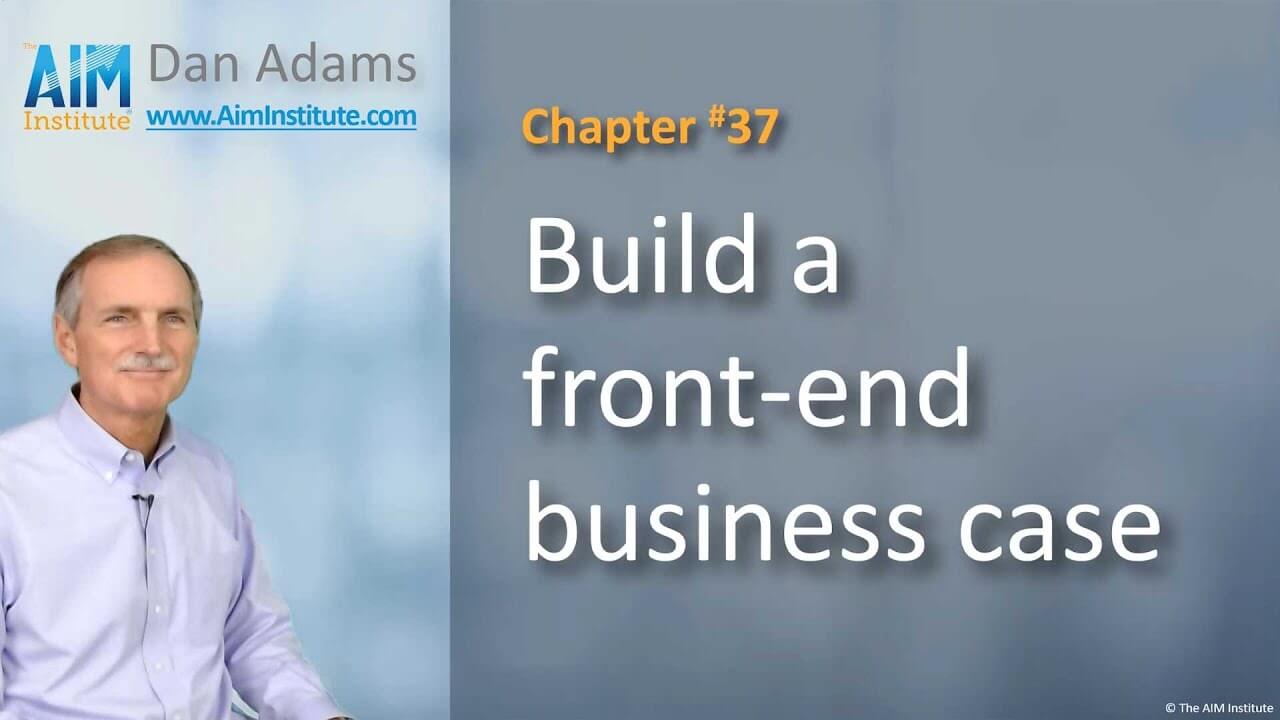B2B Organic Growth Series: Chapter #37
Build a front-end business case

Subscribe to the series. Get 50 free videos, sent daily or weekly.
Here are the 12 points of a strong B2B Business Case. Also consider an abbreviated-but-powerful 6-point “Market Case” as your entry ticket into the development stage.
b2bgrowth.video/37 Video length [2:49]
Transcript of Chapter 37
My golden rule of investment is, “Make your decision when you’ve gathered the most facts, and spent the least money.” In a Stage-Gate® process, this is the gate after the front-end—which is relatively inexpensive—and before the very expensive development stage.
Most companies are too casual about this gate review, letting each team present its own unique PowerPoint slides. Human nature says a team will talk about its project’s strong points, and avoid the weak areas.
So management tries to guess what’s missing… “What about your competition?” … “How about the technical risks?” It’s like a shell game: “Is it this?” “How about this?” What a waste of everyone’s time, money and self-respect! It’s better to decide ahead of time what all teams should cover.
We recommend these 12 points. The sequence is important: “Do we want to do this?”… “Are we able to do this?”… and, “What’s the impact if we do this?”
For smaller projects, you might create a Market Case with just the first 6 points. Let’s take a quick look:
In Project Scope, you give an overview, explaining who will buy what from you and why. Describe the technology & market stretch… and introduce the team.
In Strategic Fit, describe the project’s fit with your competencies, such as these. Explain how you’ll close any large gaps, and describe your global reach.
In Market Attractiveness, describe market size and growth… and your current presence. Cover market trends… and regional variations.
In Customer overview, showcase major customers and your relationships… identifying any charter customers. Specify how many interviews you conducted and describe customer reactions.
In Competitive Landscape, detail both direct competitors, and alternative, competing technologies. Describe competitive intensity and anticipate competitive reactions.
The Value Proposition is the most important section. Show your Market Satisfaction Gap chart, highlighting outcomes customers are most eager to see improved… and explain which your product will satisfy. Close by seeking approval and scheduling your next review checkpoint.
You can download the PDF version of this Market Case sample for a closer look.
When your business standardizes on something like this, you’ll see the quality of your projects entering the development stage go up… a lot.
Comments